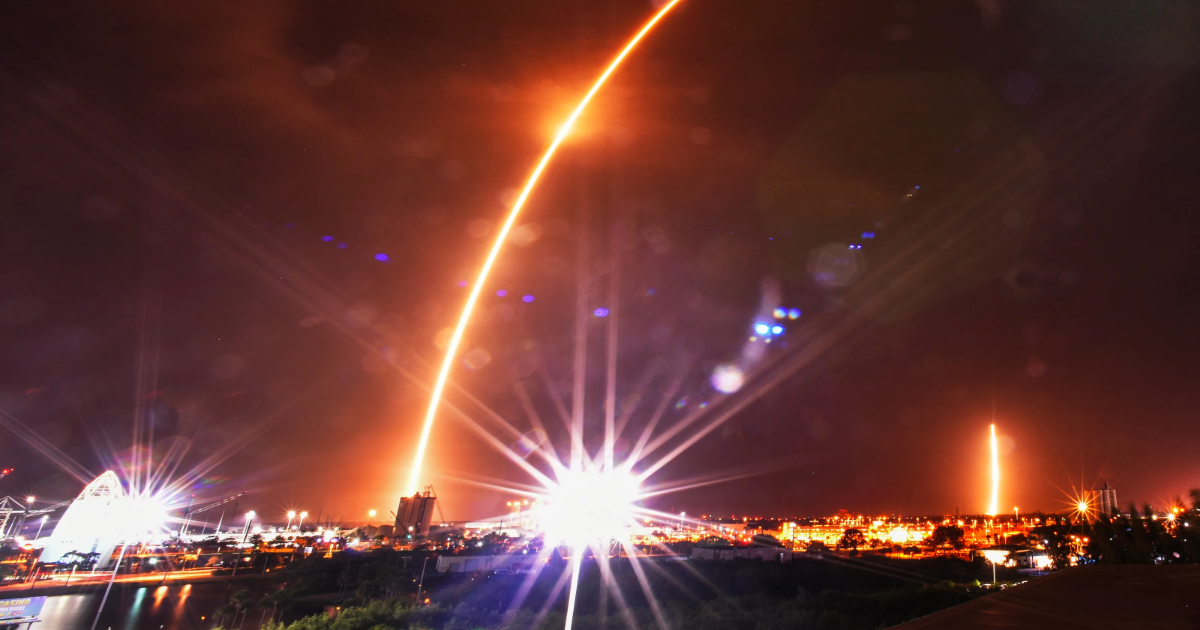
Generating window-rattling sonic booms in the cloudless predawn air, NASA and SpaceX teamed up Monday, April 21, to launch a Falcon 9 rocket on a resupply run to the International Space Station from Kennedy Space Center.
“Excellent and beautiful launch we had,” Dana Weigel, NASA’s ISS program manager, said during the agency’s launch broadcast.
The CRS-32 mission lifted off at 4:15 a.m. EDT from pad 39A under pristine weather conditions from the Cape, carrying more than three tons of cargo to the orbiting outpost.
Weigel’s post-liftoff remarks came about 11 minutes after the Falcon 9 first-stage booster touched down at Landing Zone 1 at Cape Canaveral Space Force Station, completing its third mission.
Cape Canaveral: Is there a launch today? Upcoming SpaceX, NASA rocket launch schedule at Cape Canaveral
Need a break? Play the USA TODAY Daily Crossword Puzzle.
Looking ahead, the Dragon should wrap up its roughly 28-hour trek and dock autonomously with the ISS about 8:20 a.m. Tuesday, April 22. The spacecraft is logging its fifth mission after previously flying the CRS-22, CRS-24, CRS-27 and CRS-30 missions to the ISS.
A NASA breakdown of the 6,659 pounds of cargo packed inside the Dragon:
- Crew supplies: 3,236 pounds.
- Science investigations: 562 pounds.
- Vehicle hardware: 562 pounds.
- Spacewalk equipment: 419 pounds.
- Computer resources: 18 pounds.
Zebulon Scoville, deputy manager of NASA’s Transportation Integration Office with the ISS program, told reporters the Dragon’s supply list includes 1,262 tortillas for ISS crew members.
“Typically we do try to fly some fresh fruits or vegetables — or even some ice cream we’ve flown in the past with the crew,” Scoville said during a Friday prelaunch media teleconference.
“This time, we tried to prioritize some of the more shelf-stable foods that have a longer shelf life, compared to some of those more perishable items,” Scoville said.
The Dragon should remain at the ISS for about one month, then return to Earth carrying about 4,000 pounds of items, Youmei Zhou, a SpaceX propulsion engineer, said during the launch broadcast.
“This is our 52nd Dragon mission overall and the 47th to the space station, with 31 of those on re-flown Dragons,” Zhou said.
Monday’s Falcon 9 liftoff marked Florida’s 31st orbital rocket launch thus far this year from Cape Canaveral Space Force Station and adjacent KSC. As a reminder, the Cape established a new record of 93 annual launches just last year.
“Along with food and essential equipment for the crew, Dragon is delivering a variety of science experiments, including a demonstration of refined maneuvers for free-floating robots,” a NASA post-launch press release said.
“Dragon also carries an enhanced air quality monitoring system that could help protect crew members on exploration missions to the Moon and Mars, and two atomic clocks to examine fundamental physics concepts, such as relativity, and test global synchronization of precision timepieces,” the press release said.
For the latest news and launch schedule from Cape Canaveral Space Force Station and NASA’s Kennedy Space Center, visit floridatoday.com/space.
Rick Neale is a Space Reporter at FLORIDA TODAY. Contact Neale at[email protected]. Twitter/X: @RickNeale1



